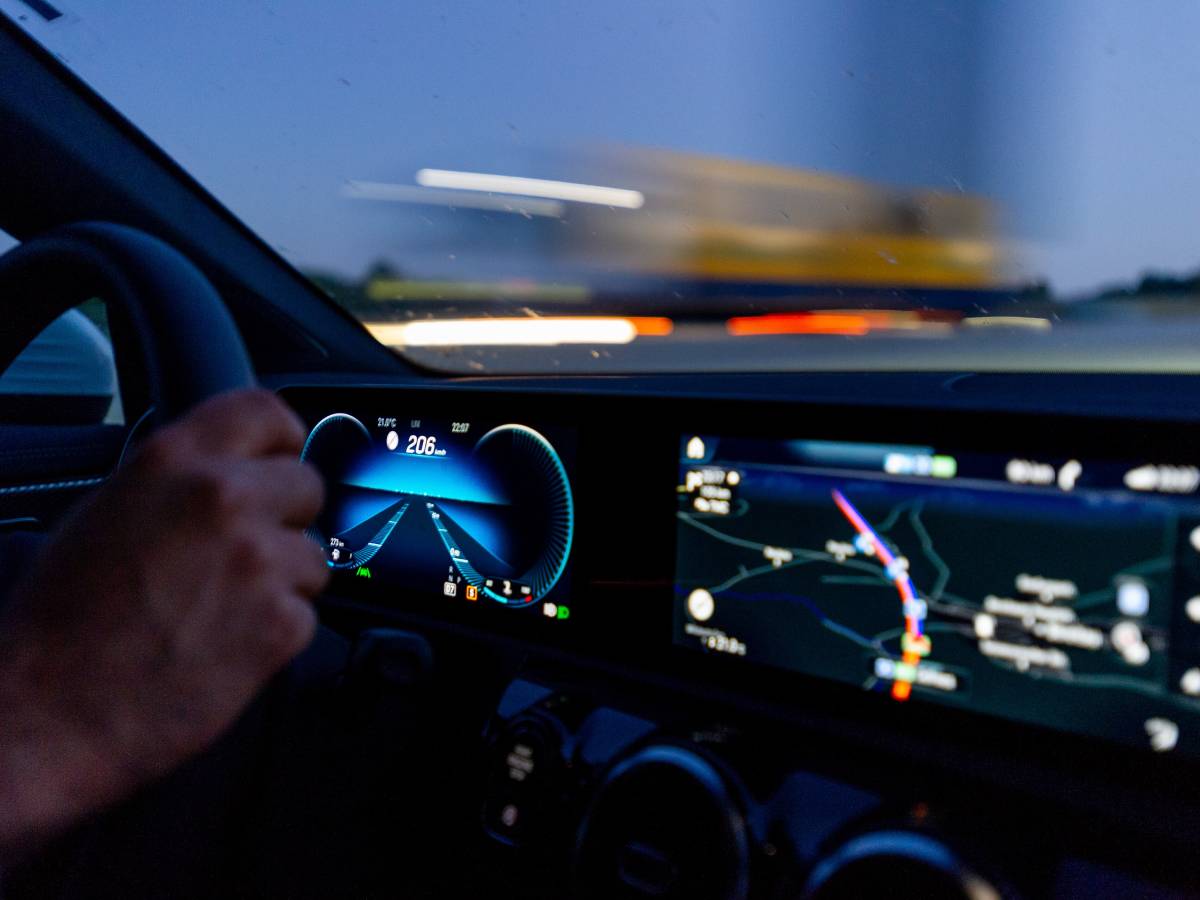Manufacturers worldwide are working on cars that can drive without a driver. What can such vehicles do, and how safe are they? All questions and answers.
Table of Contents
What Does Autonomous Driving Mean?
In autonomous driving, robotic vehicles transport people independently and purposefully in real traffic without a driver’s intervention. Translated, it means that a machine, i.e. the car, steers, accelerates and brakes independently and thus brings the passengers independently to a previously defined destination.
The passengers do not have to intervene in the driving process or only when requested. But autonomous driving is not the same as autonomous driving, with five different levels.
What Advantages Can Robot Cars Offer?
Drive yourself in the car and watch a movie instead of looking at the road? That should become a reality at some point. Robot cars, i.e. autonomous vehicles, offer this advantage. And even more: depending on the autonomy level (see below), the passenger hardly ever has to deal with driving the vehicle. This should save time and spare your nerves.
Robot cars should also reduce accidents in increasingly dense traffic. According to the Federal Statistical Office, 88 percent of accidents in 2017 were due to driver error and three per cent to pedestrians. The most common cause of accidents is human error – and not technical.
Most cars already have technology built into them that is designed to reduce accidents: the Electronic Stability Program (ESP) prevents cars from skidding. An emergency brake assistant automatically initiates emergency braking before a collision, reducing rear-end collisions.
Connected cars could also be on the road faster because they share information, warn of accidents, bad weather or traffic jams (this is so-called car-to-car communication ), and automatically redirect the respective vehicles.
If the cars drive autonomously, they can be connected to form convoys and drive more efficiently. If people share a vehicle, its downtime is reduced. Because the autonomous car can then drive independently to the next passenger, it is used more. On average, a conventional car drives only 45 minutes daily, i.e. only three percent of a day. In other words, a car in Germany has flat tires for more than 23 hours a day on average.
How Autonomous Are Cars?
When it comes to autonomous driving, experts distinguish between five different stages, so-called levels. The Society of Automotive Engineers (SAE), an association of automotive engineers, has defined a standard that is valid today:
- After that, at level 0, the driver fully controls the vehicle. No assistance system helps him.
- At level 1, assistance systems such as distance control (active cruise control) or lane change warning support the driver. Most modern compact and small cars already have these assistants.
- In Level 2, assistance systems help with parking, lane guidance or steering at certain speeds, mostly on country roads and motorways. The driver thus continues to monitor the driving environment.
- With highly automated driving in Level 3, the car controls itself, and the driver can turn away from driving for a while. However, he must be able to intervene again at any time. So this is only partially autonomous driving.
- Level 4, or highly automated driving, means that a computer system controls the car without the driver having to do anything. It only intervenes if the system fails. The steering wheel, pedals or joystick must still be in the vehicle.
- With Level 5 vehicles, the car takes complete control, and the system controls itself, i.e. drives entirely autonomously. The vehicle does not need a steering wheel or pedals, nor does it need a driver. Every occupant becomes a passenger.
Which Systems For Autonomous Driving Are Already Available For Cars?
Most small and compact cars already have assistants such as active distance control or lane change warning. Mid-range cars offer systems to support lane guidance and steering, so they drive semi-autonomously. Some luxury cars are highly automated – they control themselves. The functions for this are integrated into some vehicles but not activated because the legislature has not yet approved them.
Autonomous mini buses, so-called people movers, are already in use. In the Lower Bavarian spa town of Bad Birnbach, a minibus takes guests from the train station to the center.
Also Read: The Technologies Behind The Rise Of Robots
When Will Autonomous Vehicles Become Commonplace?
According to experts, the driver must be able to control his vehicle at all times while driving. So far, 74 countries have signed the agreement, but not China and the USA. The agreement is binding for the signatories. Since 2016, computer systems have been allowed to support drivers if they can be switched off or overridden. The responsibility still lies with the driver, who is not allowed to devote himself to other tasks while driving.
Where Will We Be Able To Drive Autonomously First?
Experts assume that we will first be able to drive autonomously on freeways. The advantage there: all road users drive in one direction, and there are no traffic lights or crossings, and children, cyclists, dogs and cats do not usually cross the road.
But shuttle vehicles could also drive autonomously on a predetermined route in closed areas such as an airport or university campus

